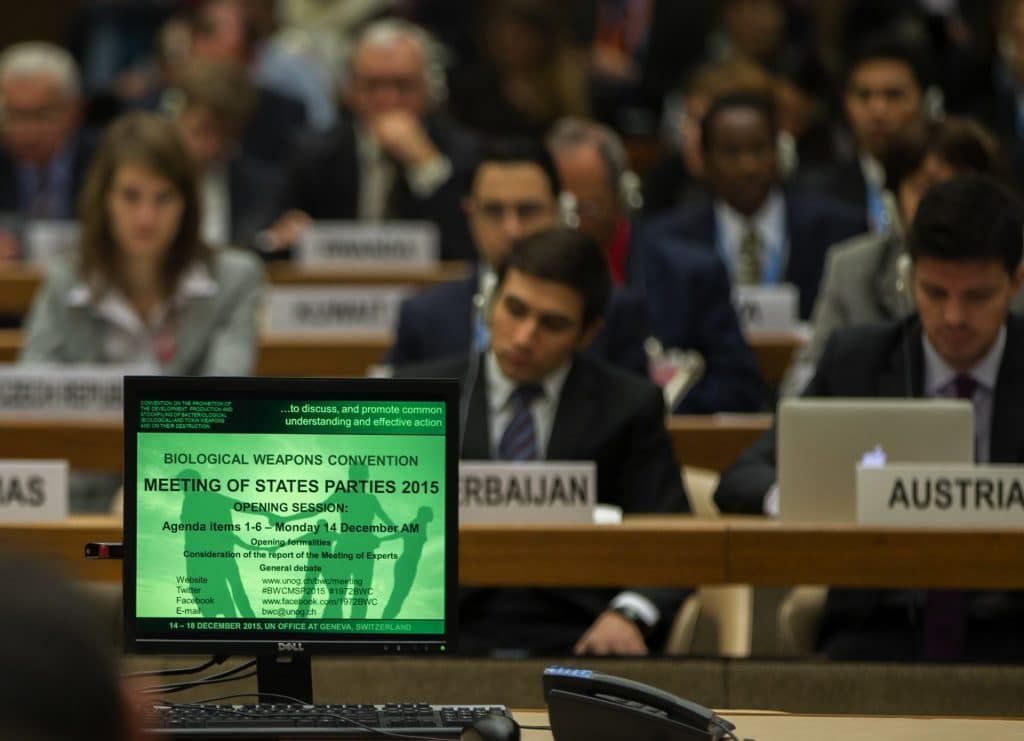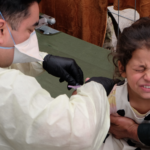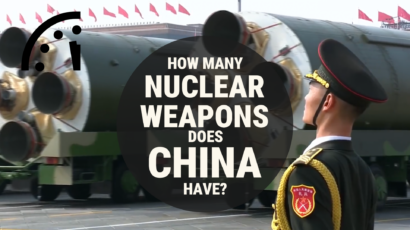Don’t let finger-pointing doom this key treaty against bioweapons
By Filippa Lentzos, Jez Littlewood | March 4, 2022
 Representatives to the Biological Weapons Convention, the international treaty banning bioweapons activity, meet in 2015. Credit: Eric Bridiers/US Mission Geneva. CC BY-ND 2.0.
Representatives to the Biological Weapons Convention, the international treaty banning bioweapons activity, meet in 2015. Credit: Eric Bridiers/US Mission Geneva. CC BY-ND 2.0.
When the US State Department accused Russia of maintaining a biological weapons program last year, officials were putting concerns they had been harboring for years squarely on the record. Meanwhile Russia and China have been accusing US partnerships in Ukraine, other former Soviet republics, and elsewhere of being fronts for nefarious biological activities or bioweapons programs. For some 50 years, the Biological Weapons Convention has been the bulwark stopping countries from including these arms in arsenals and war plans, but some experts warn there is a new interest in the weapons or even a budding biological arms race.
Few doubt that the Biological Weapons Convention is languishing at a critical time. Major world powers are accusing each other of maintaining bioweapons programs and the fast pace of the global scientific enterprise is making it harder for countries to find balance between technological advances and risky biological research. Meanwhile, efforts to strengthen the convention have been in a holding pattern for over 20 years since the United States scuttled negotiations meant to give the treaty a means of verifying compliance. It’s now generally very hard to get anything done at treaty meetings.
The world needs a stronger Biological Weapons Convention more than ever, and this summer, when states meet to review the treaty, the prospects for making progress on issues like compliance, transparency, cooperation and verification are better than they have been for over a decade, if acrimony over bioweapons claims, for starters, doesn’t get in the way.
Bioweapons claims. Allegations of biological weapons programs are not a new issue, but in the last year more claims have been made public. Some are disinformation; others are assessments that cannot be easily validated with publicly available data.
The United States has been concerned about biological weapons for years, but the extent to which it announces these concerns publicly varies from year to year. Back in 2001, in the wake of 9/11, the United States identified Iraq, North Korea, Iran, Libya, Syria and Sudan as concerns. Last year, in its annual arms control compliance report China, North Korea, Iran, and Russia were named as problem states. For Iran, the concerns were couched in terms of dual use activities, i.e. research that could be used for peaceful or offensive purposes. For China, the United States has been concerned with the country’s biotechnology infrastructure, activities with dual-use applications, and pursuit of scientific cooperation with so-called “countries of concern,” but the US government has stopped short of claiming that China is non-compliant with the convention.
But in 2021, the State Department made a somewhat startling shift.
It not only assessed North Korea as having an offensive biological weapons program, which the department had done before, but also accused Russia of the same.
The report unambiguously declared that Russia maintains an offensive biological warfare program and is in violation of the convention. While the State Department provided no new evidence to explain the shift in language from the 2020 report, which said the United States was unable to conclude Russia has fulfilled its obligations under the convention and listed “concerns about Russian activities,” another issue presaged the change in the report’s tenor. In August 2020, the department added three key military biological facilities in Russia to its list of entities subject to trade restrictions because the US government believes they pose security risks. The 2021 report made clear that the United States believes these same three institutes are Russian Ministry of Defense facilities associated with the biological warfare program.
The compliance report’s allegations are part of a larger US strategy to push back on Russia’s increasingly obstructionist diplomatic behavior in arms control talks and its aggressive disinformation campaign around biological weapons. Last November, US National Security Advisor Jake Sullivan, in a White House statement, noted “some nations still possess biological weapons programs” and that others seek to acquire them. The US under-secretary for arms control and international security, Ambassador Bonnie Jenkins, echoed these claims a few days later at a Biological Weapons Convention meeting where she referred to countries that possess “sophisticated, well-established biological weapons programs.”
But the US claims aren’t occurring in a vacuum.
Like Russia, China has often made claims about US biological weapons programs, most notably a repeated false assertion that the United States used bioweapons in the 1950s Korean war. More recently, Chinese officials have leveled the baseless claim that Fort Detrick, once the heart of the former US offensive weapons program, is the source of the SARS-CoV-2 outbreak.
The new twist is that Russia and China are now making these sorts of claims about US biological weapons programs in unison.
In October, as a UN meeting got underway, the two governments, for the first time, issued a joint statement that expressed “serious concerns” about United States and its allies’ overseas military biological activities, including the claim that they operated 200 “opaque and non-transparent” biological laboratories outside US territory and that activities at these laboratories pose “serious risks” to Russian and Chinese national security.
Russia and China followed this statement in November with individual claims in the form of official Biological Weapons Convention statements.
Russia, which has been accusing the United States of establishing a chain of biological weapons labs on Russia’s borders for years, claimed the United States and its NATO allies had significantly expanded military biomedical activities in countries near Russia. And China stated that US “bio-military activities” outside its territory had caused serious concerns about whether the United States was complying with the Biological Weapons Convention.
The United States characterized these claims as “truly appalling distortions of fact.” Chris Park, a State Department official who is part of the US delegation to the convention, called the accusations “pure disinformation, plain and simple.” The hundreds of laboratories Russia and China accuse of suspicious activity are not American facilities, he explained. While the US Department of Defense’s Cooperative Threat Reduction Program helped support the labs, they are public and animal health facilities that are owned and operated by the countries they are located in.
In advance of the Beijing Olympics in February, Chinese President Xi Jinping and Russian President Vladimir Putin released an extensive joint statement with a vision of a “new era” of international relations that replaced the American-led order. The “Beijing manifesto” as The Washington Post characterized it, also covered biological security. The pair re-iterated claims from the preceding months that “domestic and foreign bioweapons activities by the United States and its allies raise serious concerns and questions for the international community regarding their compliance with the [Biological Weapons Convention].” They called on the United States and its allies “to act in an open, transparent, and responsible manner by properly reporting on their military biological activities conducted overseas and on their national territory.” And they also pressed for renewed negotiations on a legally binding agreement to the Biological Weapons Convention that would create a verification mechanism.
Allegations, so what? Trading allegations about biological weapons is nothing new for the United States, Russia, and China. While the increase in biological barbs these three states throw at each other is concerning, it does not necessarily mean the ninth review conference of the Biological Weapons Convention, scheduled for August, is doomed to become a shouting match. Past allegations have soured the tone, but not prevented meaningful work at these events.
One ray of hope is that each of the three countries has articulated plans that address issues of compliance, transparency and accountability. Each is different, but there is common ground to craft a workable compromise solution if the US, China, Russia and others are determined to make progress. The most significant reason for hope is a change in the US approach to making the convention more robust.
Last fall, Sullivan, the US National Security Advisor, said the United States is “determined to strengthen and revitalize the [convention].” Jenkins, the US ambassador, followed by outlining a two-track approach. Track one sees the upcoming meeting taking near-term, concrete action on a set of proposals that have been discussed at convention meetings over the past few years, such as creating a mechanism to review scientific advances and establishing a voluntary fund for technical cooperation.
A second track of activity would address harder issues, particularly that of improving ways of demonstrating and assuring compliance with the treaty. Only about half of the states in the Biological Weapons Convention regularly submit confidence building measures, reports that serve as one of the main means of assuring others of compliance. They’re not a mandatory, legal requirement.
The new tracks proposed by Jenkins represent a shift in the US position. Although the US proposal is for working groups to address future compliance mechanisms, i.e., meetings about the issues rather than a proposal, what gives the US second track greater potential substance is the similar approaches proposed by Russia and China’s statements in 2021.
Both Russia and China want to return to negotiations on the verification protocol abandoned in 2001, but both are aware the protocol of 2001 is not suitable for the future. Beyond significant changes in science and technology, the threat and risk environments around biological weapons are different in 2022 to those of 2001. The three countries have different visions, but share the idea of having specialised working groups explore how to strengthen and revitalize the treaty.
Reaching agreement on anything in the Biological Weapons Convention these days is extremely hard. In the last three years running, countries have not even been able to agree any substantive outcome at technically focused, expert meetings. The procedural reports from these gatherings simply note “no consensus could be reached”—an exceptionally poor show for meetings aiming merely to “promote common understanding.”
What chance does a new approach have of success? The United States, unlike Russia and China, has many allies, and much will depend on them coming on-board. If they do, and the United States, Russia and China recognize the commonalities in their approaches, and they work with other countries, it might be possible to break the status quo of a moribund work program.
Together, we make the world safer.
The Bulletin elevates expert voices above the noise. But as an independent nonprofit organization, our operations depend on the support of readers like you. Help us continue to deliver quality journalism that holds leaders accountable. Your support of our work at any level is important. In return, we promise our coverage will be understandable, influential, vigilant, solution-oriented, and fair-minded. Together we can make a difference.
Keywords: Biological Weapons Convention, China, NATO, Russia, Ukraine, bioweapons
Topics: Biosecurity
















